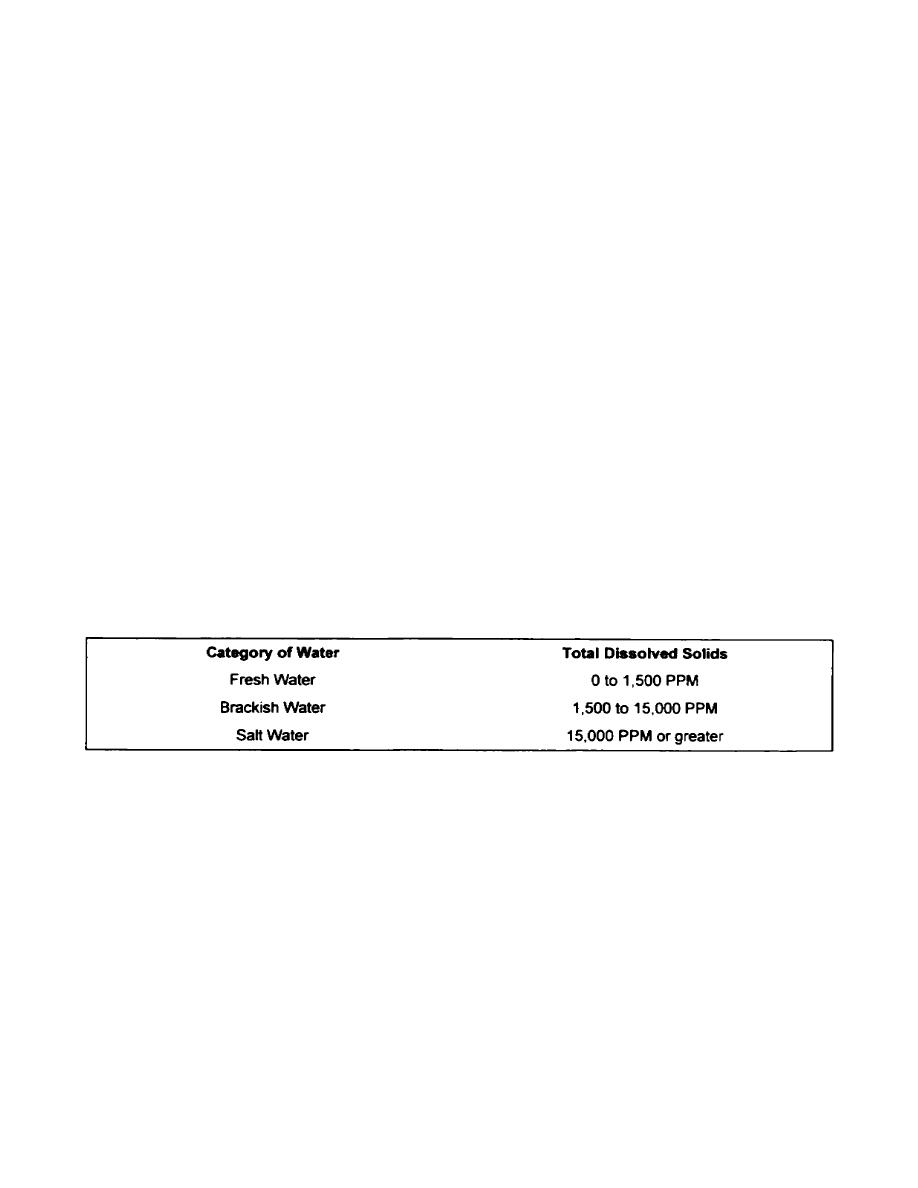
Every coast will vary relative to geographical or physical layout.
Coastal soil will vary (for example, soft sand, boulders, rocky, lava beds).
Coastal surf turbulence will be unavoidable.
Coastal tidal fluctuations will vary as much as 200 feet.
Distance of water level from purification site will be limited by equipment.
When performing the reconnaissance, the water supply section leader should ensure a representative from the command
surgeon is present.
Monitoring Development of Seawater Sources. You need to consider the following factors when developing seawater
sources: surf action, saltwater corrosion, suspended sand and silt in the water, living organisms, surface oil along beaches, and
the rise and fall of the water level with the tide. In arctic regions, another factor to consider is the potential for damage to raw
water supply lines from ice floes washing onto the beach. In all regions, if possible, locate RO equipment on sheltered bays,
harbors, lagoons, or inlets. You can supply raw water by intakes constructed the same as surface intakes for fresh water. On
open beaches and small islands, there are a variety of different types of intakes that can be constructed.
One type is the saltwater or beach well. These wells can be dug to tap brackish or salt ground water (Table 1-7). In some
areas, these wells may be dug deep enough to tap into fresh water aquifers. They are preferred to offshore intakes, for they
eliminate the problems caused by tides, surf, and shallow waters near the shore. Another advantage of such wells is that they
can be constructed above the shoreline under overhead concealment. Other types such as driven and jetted wellpoints may
also be effective at sandy beach locations.
Table 1-7. Total Dissolved Solids Categories
A disadvantage is the possibility of high hydrogen sulfate in the raw water, causing fouling problems with the RO
membranes and taste and odor problems in drinking water. The RO membranes will not remove gaseous hydrogen sulfide
and will increase the corrosion of the bronze components of the ROWPU. When chlorine is added to product water
containing this gas, the hydrogen sulfide will convert to a solid and cause the product water to cloud.
Supervising Removal of Hydrogen Sulfide. The presence of hydrogen sulfide alters taste and appearance but does not
affect the potability of the water. To remove hydrogen sulfide gas, personnel are to pump raw water into a storage tank and
aerate. This causes the sulfide to change to a solid and subsequently
1-41


 Previous Page
Previous Page
